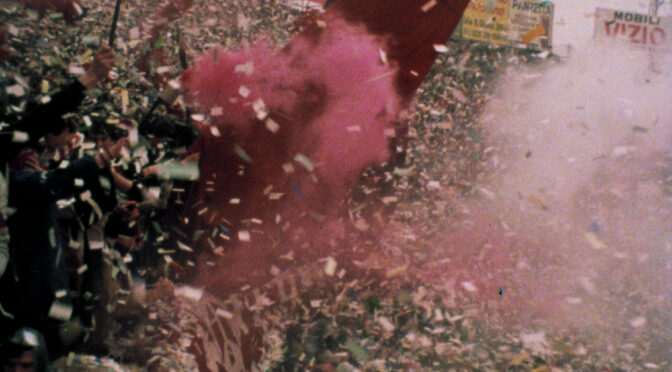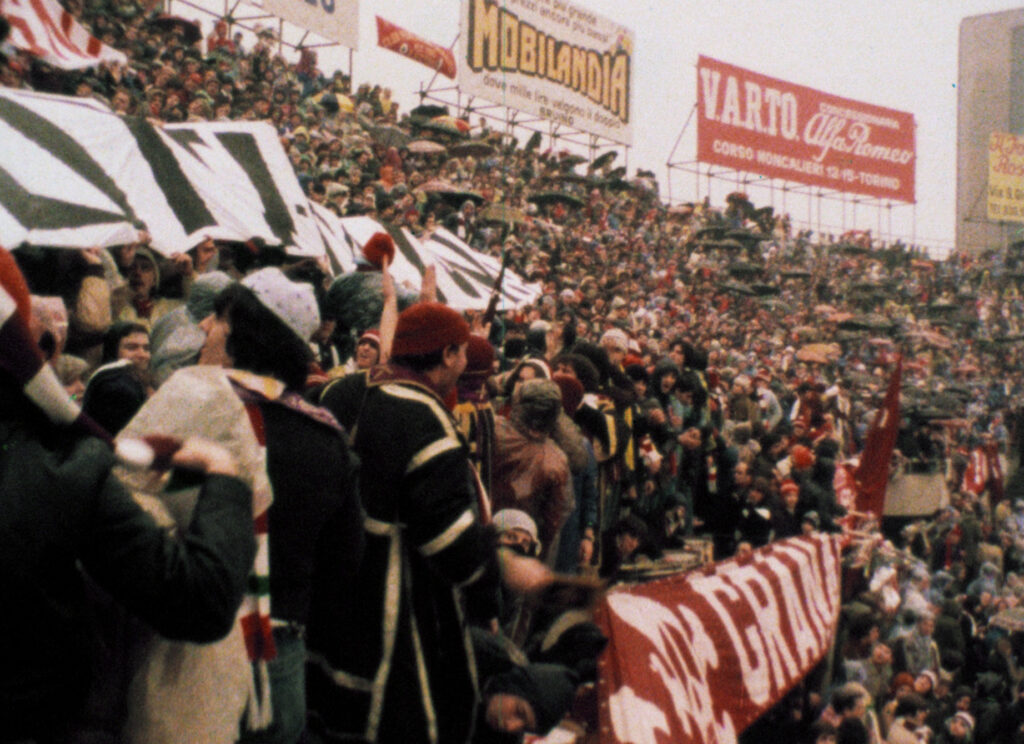Article by Nicolò Cifarelli
Translation by Vittorio Cavalli
An extraordinary time-capsule takes us to the late 1970s Turin, where a lost youth experiences the birth of a phenomenon, the ‘ultras’, which would gradually become more and more important in the public life of our country.
Originally conceived as a short film, Il potere dev’essere bianconero (1978) was expanded due to its profound social significance. With Ragazzi di stadio -digitized by the National Film Archive of Ivrea in 2024 following the director’s death-, Daniele Segre created one of the first investigations into the phenomenon of Italian Ultras.
For two years, Segre frequented the stands of the stadium and followed the meetings, the marches, and the dreams of young boys and girls. His deliberately marginal presence, reflects the very nature of the phenomenon he seeks to tell. With a discreet approach, made of few questions and brief interventions, the filmmaker allows the protagonists to become the true narrators of the story and to shed light on their reality. Segre always maintains the right distance between the camera and those being filmed, avoiding the ‘fog’ that the term ‘tifo’ (from the Greek) might suggest.
The protagonists of the documentary are the young people of Turin and the places they inhabit: a city marked by the political divisions of the 1970s, a city bearing the scars of the ideological struggles sweeping across Italy. The pioneers of the ultra’s movement, raised in a context of social disintegration, find in the stands of the stadium a space for belonging and freedom, responding to the tensions of an era that forced them to choose between disengagement and armed struggle.
The images do not hide the relevance of armed struggle, but show it within the context of the time: the P38 gesture, the slogans echoing through the streets of Turin, are integral parts of the story that the director shows us, with the title Il potere dev’essere bianconero (The Power Must Be Black and White), a twisted version of the slogan ‘Il potere deve essere operaio’ (Power must be workers’), reflecting the intersection of ultras and social tensions.
Segre’s analysis is clear and respectful: he does not demonize the phenomenon of the stands, nor is he swayed by psychological interpretations that view it as a safety valve for a repressed society. On the contrary, he illustrates a world in which young people, many of whom emigrated from southern Italy, are in search of identity and spaces for social gathering, finding answers in urban subcultures and in football stands.



